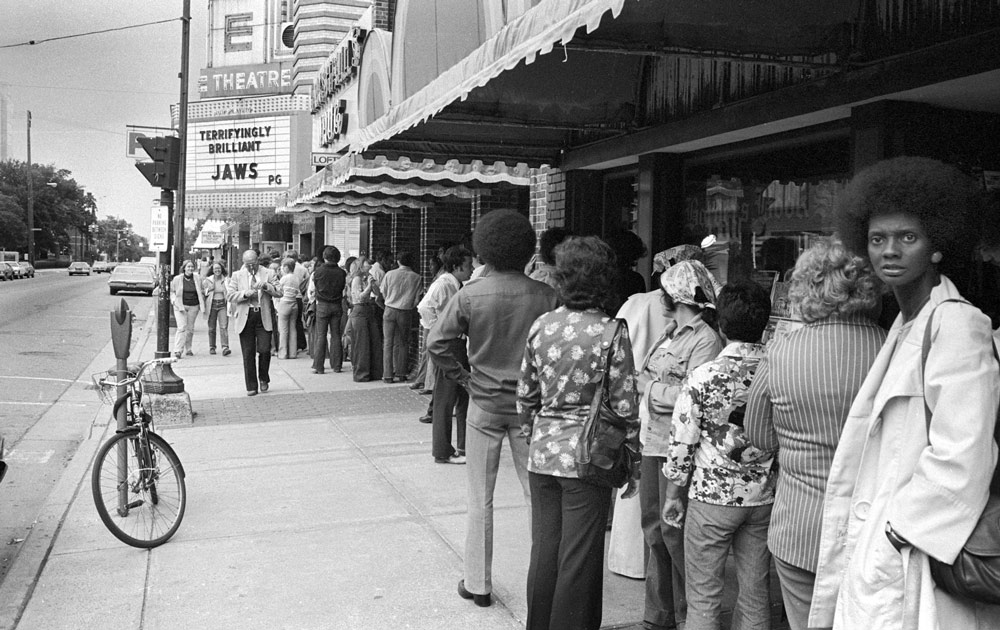By Browsh, Jared Bahir
Yes, of course.
Two short notesE and F have come to symbolize stress, anxiety, and sharks, as well as the innate fear of being pursued by a predator.
And they owe Jaws a great deal.
John Williams’ eerie soundtrack and Steven Spielberg’s smash hit movie from fifty years ago made generations of swimmers reconsider their decision to enter the sea.
I chose to delve more into the enduring appeal of these two notes as a media history and popular culture historian, and I discovered how they are influenced by Alfred Hitchcock, Mickey Mouse, and 19th-century classical music.
I’m having trouble seeing the YouTube video.
The first summer blockbuster
A 4,500-pound great white shark was killed off Long Island in 1964 by fisherman Frank Mundus.
Peter Benchley, a freelance journalist, heard the story and started proposing a novel about three men trying to catch a man-eating shark. He based Quint’s character on Mundus. Benchley was hired by Doubleday to write the book, and before it was released in 1973, Universal Studios producers Richard D. Zanuck and David Brown bought the film rights. Spielberg, at 26 years old, was hired to direct.
Benchley’s 1974 book became a bestseller by appealing to both mythological and actual anxieties about great white sharks, such as the notorious 1916 Jersey Shore shark attacks. A major component of Universal’s marketing strategy, which started months before the movie’s premiere, was the book.
In order to simultaneously promote the publication of the paperback edition of the novel and the impending movie, Zanuck, Brown, and Benchley began making appearances on various radio and television shows in the fall of 1974. A nationwide television commercial campaign showcasing the two-note theme by up-and-coming composer Williams was also part of the marketing. It was supposed to be released in the summer, which was then just for movies with bad reviews.
At the time, local reviews usually came before a film’s market-by-market distribution. Nevertheless, Universal’s choice to screen the movie in hundreds of theaters nationwide on June 20, 1975, resulted in enormous upfront earnings and a 14-week run as the top movie in the United States.
Jaws is often regarded as the first real summer blockbuster. The film launched Spielberg’s career and began his long-term partnership with Williams, who would later receive the second-highest number of Academy Award nominations in history (54, behind Walt Disney’s 59).
The film s beating heart
Spielberg initially believed Williams’ two-note theme was a joke, but it is now regarded as one of the finest cinematic themes ever.
However, composers from the 19th and 20th centuries, like as Claude Debussy, Igor Stravinsky, and particularly Antonin Dvorak’s Symphony No. 9 From the New World, had influenced Williams. The Jaws theme contains echoes of Dvorak’s symphony’s conclusion as well as the sounds of Sergei Prokofiev’s Peter and the Wolf, another character-driven musical composition.
Both the Jaws soundtrack and Peter and the Wolf are excellent illustrations of leitmotifs, which are musical compositions that symbolize a location or a person.
Increasing levels of emotion and dread are evoked by the ostinato, a musical pattern that repeats itself at varying speeds. As Spielberg and the technical team battled with the faulty pneumatic sharks, which they had called Bruce after Spielberg’s lawyer, this became increasingly crucial.
The shark does not thus show up until the 81-minute point of the 124-minute movie. However, it may be heard in Williams’ theme, which some music historians believe evokes the heartbeat of the shark.
Sounds to manipulate emotions
Disney is also responsible for Williams’s contribution to the revolution of character-driven music in movies.
They don’t merely share a trophy case. They were also aware of how viewers’ emotions may be heightened and action amplified by music.
Despite beginning his career during the silent film era, Disney used sound to create one of the greatest media icons in history, Mickey Mouse, and went on to become a titan of film and later media.
Disney realized that sound would be the direction of film when he saw The Jazz Singer in 1927.
Disney’s first animated movie with synchronized sound, Steamboat Willie, debuted on November 18, 1928, at Universal’s Colony Theater in New York City.
Disney employed technology that recorded sound directly on the film reel, in contrast to earlier attempts to include sound into movies by using record players to play music or by sending actual musicians to play in the theater.
Steamboat Willie launched Mickey and Disney’s careers and became an international hit. It wasn’t the first animated movie with synchronized sound, but it was a technical advancement over earlier attempts.
Mickey Mousing is the term used to describe the usage of sound or music to match the rhythm of the figures on screen.
In 1933, Mickey Mousing was skillfully used in King Kong, a live-action movie with music that mirrored the movements of the enormous ape. For instance, Kong pulls actress Fay Wray’s character Ann Darrow away in one scene. As Kong clutches Ann, composer Max Steiner used milder tones to portray his curiosity. These are followed by faster, more menacing tones as Ann flees and Kong pursues her. By doing this, Steiner helps audiences suspend disbelief and join a fantastical realm by encouraging them to both fear and identify with the beast throughout the movie.
Following World War II, Mickey Mousing’s popularity began to wane.It was viewed by many filmmakers as immature and overly basic for the developing and changing film industry.
When less is more
Despite this criticism, the method was nonetheless employed to score some famous moments, such as Alfred Hitchcock’s Psycho, which features violins playing in the shower as Marion Crane is stabbed.
Spielberg held Hitchcock in high regard.After sneaking onto the Universal site to see the production of Hitchcock’s 1966 picture Torn Curtain, a young Spielberg was even expelled.
Jaws blatantly displays the influence of Hitchcock, the Master of Suspense, despite the fact that Spielberg and Hitchcock never met. Perhaps this is the reason Spielberg first got over his reservations about utilizing something so straightforward to symbolize suspense in the thriller.
Spielberg’s first feature-length picture to be shot on the water had production problems, but the two-note motif helped him get beyond them. Even though the titular predatory star only made a few appearances, Spielberg was compelled to use Williams’ minimalist theme to convey the shark’s menacing presence due to the animatronic shark’s malfunction.
Williams would use a similar sound design for some Star Wars characters as his illustrious career progressed. The Imperial March was played to create the mood for the Dark Side commander each time Darth Vader made an appearance.
The Jaws theme and the way just two notes control suspense serve as a reminder that sometimes less really is more in movies, especially as costs approach half a billion dollars.
![]()
At the University of Colorado Boulder, Jared Bahir Browsh teaches critical sports studies as an assistant professor.







